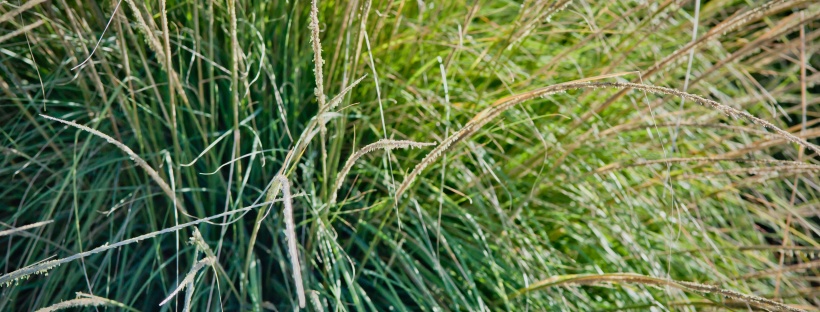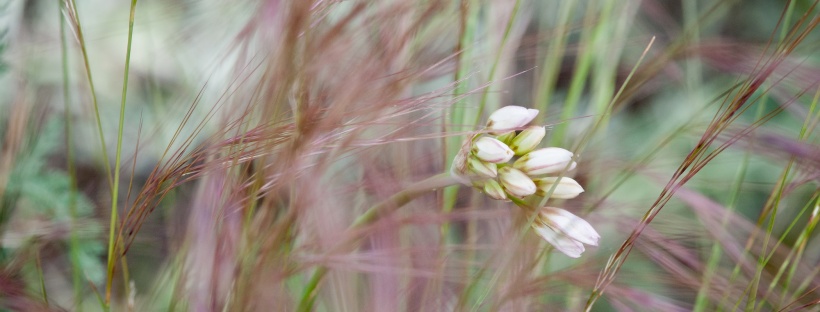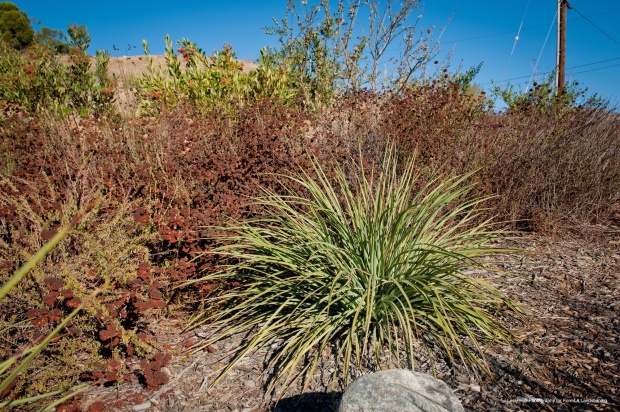It’s up to each of us to make LA safer and more resilient.
By Cassy Aoyagi: After evacuating husband, boy, pup and chickens from our home last year, my long term interest in fire-wise landscapes became an obsession. We spent much of 2017 and 2018 waist deep in research and deep in conversation with expert after expert. In August, as LAFD began gearing up for a heavy fire season, we had the honor of curating a panel of fire-wise landscape experts for Descanso Gardens.
10 Fire-Wise Landscapes Qualities
- Native: While no plant is fire-proof, some native foliage does a particularly good job of withstanding drought and heat, retaining moisture that helps these plants resist fire. Here are a few of our favorites.
- Non-Invasive: Several popular plants marketed as “drought tolerant”, like Pampas, Feather, and Fountain grasses, and Pride of Madeira, are actually quite combustible. When these plants make their way into wilds space, they act like arsonists, increasing our fire danger.
- Well-Spaced and Placed: Planting foliage young with room to grow to its full size will minimize the amount of fire clearance necessary each year. It’s also a great way to save money and maximize the impact of landscape on your home’s appreciation.
- Treeful: Healthy tree canopy at a safe distance from rooftops can shield a home from flying embers. This is really lovely news, as treeful landscapes provide so many other benefits.
- Palm-Free: LA’s native palm trees live in marsh-like areas where fire danger is low. In contrast, when planted near foothills and homes, palms present grave dangers.
- Devoid of Ember “Bowling Alleys:” The gravelscapes created to respond to drought, as well as some fire-clearance methods create ample free-space for embers to roll into homes.
- Well-Irrigated: Well-hydrated objects, even those that may otherwise be considered fuel, do not burn. This includes both foliage and homes. Smart irrigation can get your foliage there. Australians in fire-prone regions have tested rooftop sprinkling systems that, likewise, make homes too wet to burn.
- Clean: Keeping your landscape tidy and healthy helps your home resist fire. Debris, weeds, dead plants, even un-stored tools become places where embers can catch. This is true on hardscapes, in gutters – everywhere.
- Smartly Located: We have built communities within known fire pathways. Those homes are simply in greater danger than those located in areas that burn less frequently. As we work to create more housing, policy makers, planners and developers must consider fire-safety as a criteria for judging locations.
- In Proactive Communities: Invasive plants will find their way to wild spaces. We have common areas that create bowling alleys. Communities that come together to reshape common ground, removing invasives, and stabilizing slopes (like Sunland, La Crescenta, and Sierra Madre) increase their luck and resilience.
Please note that these are proactive steps to take well before fire breaks out in your area. Examples of fire wise landscapes can be seen at LAFD Station 74, the Sunland Welcome Nature Garden, the Fire Station Garden in the Authentic Foothill Gardens at Sierra Madre City Hall, the Rosemont Preserve, and the Fire Wise demonstration garden at Theodore Payne Foundation.
More Information
Take Action When Fires Are NearExpect Resilience Post-FirePrepare for Debris FlowFight Fire with Smart DesignAre You a Fire Fighter?Disaster Preventing Plant Palettes






